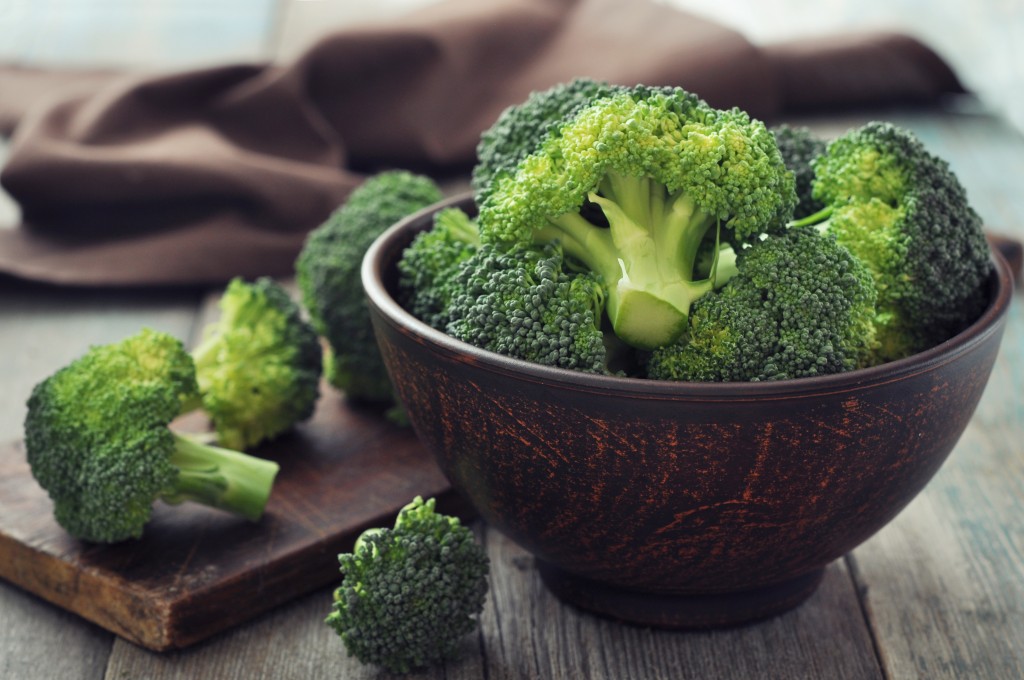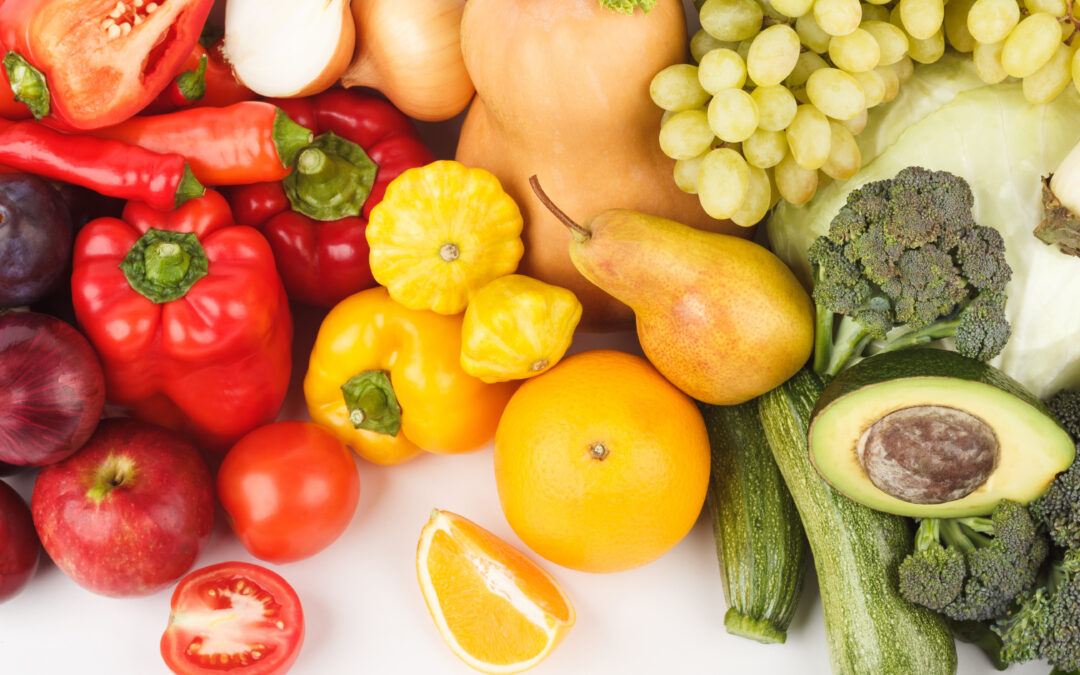How many people in the general population do you think have eaten goji berries? Or had an Acai Bowl? How many little kids do you know that know what Maca is? Or Propolis?
The term ‘Superfood’ generally conjures up some rare and unusual fruit, seed or extract, found in a far and foreign land that contains some legendary health benefits to rocket you into a new state of health and youth, if only you eat enough of it.
Most people do not think ‘broccoli’ when they think superfood.
Well, I am here to tell you that your mother was 100% correct when she told you to eat your broccoli, because it turn out that this humble veg has a plethora of significant health effects. In fact there have been over 300 research studies done on broccoli and it’s unique benefits.
What is it about Broccoli that makes it special?
Broccoli contains a number of special plant-chemicals known as phytonutrients. Phytonutrients are usually found in or form the pigment (colour) of plant foods and they confer health benefits when we eat them. They are actually part of the immune system of the plant, protecting it against infection, the sun and other threats, and when we eat the plant the benefits from these special chemicals transfer to us.
Some of the phytonutrients found in broccoli include:
Sulforaphane
Sulforaphane is a potent antioxidant with many benefits. It is thought to reduce the risk of cancer, and in animal studies has been shown to decrease the frequency, size and number of tumours.
The antioxidant effect is also beneficial for heart disease. In quantities obtained from food (as opposed from supplements) it has been shown to reduce blood pressure and cholesterol.
Lastly, sulforaphane stimulates detoxification enzymes, to break down toxins and wastes in the cell, effectively helping your body to ‘take out the trash’.
Indole-3-Carbinol (I3C)
When you eat broccoli, I3C gets transformed in the gut into another compound called DIM.
DIM has also been shown to have some cancer-protective properties, however it’s really helpful when it comes to detoxifying oestrogen.
Now, most of you probably aren’t thinking of oestrogen as a toxin. It’s a hormone, and we need it to be healthy and young, right? Yes, that is right, but there are several different types of oestrogen in the body, and this is because one type of oestrogen is very aggressive. Oestrogen’s job is to make things grow. It’s how we grow babies, for example. But when this ‘grow’ message isn’t regulated, then this becomes a big problem. This is how oestrogen is involved in breast cancer.
One of the ways that we regulate the grow message to keep it healthy, is to break down oestrogen into a more gentle form, and then to eliminate it from the body via the liver. This activity is known as detoxification and DIM can help your body to do that in a healthy way.
Because DIM helps to balance oestrogen in the body, it has also been found to help people who suffer from oestrogen-dominant problems, such as endometriosis or PMS.
Isothiocyanates (ITCs)
ITC’s are a wonderful anti-inflammatory compound found in broccoli.
They actually help to shut down inflammation caused by a nasty inflammatory chemical in the body called NF-kappaB.
Now inflammation is at the heart of all chronic health conditions and also in chronic pain. In fact NF-kappaB has been implicated in most of the problems people seek my help for, such as arthritis, inflammatory bowel disease, autoimmunity and asthma. So having tools that I know help to shut down this pathway is pretty important.
How much broccoli should you eat?
More recent studies show that the minimum amount we should be averaging is about ½ a cup of broccoli per day. Half a cup of a vegetable is 1 serving, by the way.
I do recommend trying to eat broccoli every day, but you could also eat 1 cup every second day or 2 cups twice per week to meet your weekly quota.
The healthiest way to cook broccoli.
The healthiest way to cook broccoli is to steam it, or to lightly steam fry it.
And don’t cook it for longer than 5 minutes at a low temperature. Cooking at high temps or for longer time damages and breaks down all the wonderful phytonutrients, reducing the nutrient content.
You can also eat the leaves and stems of broccoli. Make sure to peel the step and slice it, as it takes longer to cook otherwise. And you can add the leaves to your green juice as they are super nutrient dense!
Raw Broccoli and Broccoli Sprouts
Raw broccoli has a different flavour to cooked broccoli and may be slightly more difficult to digest if you have a compromised GI tract. However it is delicious and makes a great addition to salads or snacks. Even children love to eat it raw with something fun to dip it in!
Lastly, broccoli sprouts contain very high levels of sulforaphane and vitamin C. Because sprouts are a concentrated form of the plant, they tend to contain concentrated forms of the nutrients also, making them a powerhouse nutritionally!!
So you can see, broccoli is a substantially nutritious food and one that you should all be enjoying on a regular basis!
How to Enjoy
Here are a few serving ideas to get you started.
Lightly steam your broccoli and then toss together with olive oil, pine nuts and a little salt and pepper. Serve with roasted salmon or grilled chicken breast.
Heat 1 litre of bone broth. Add one head of broccoli, chopped, 2 cloves of garlic and 1 jalapeno pepper, plus one can of coconut milk. Heat for 5 minutes and use an immersion blender to blend all together for a creamy and delicious broccoli soup.
Pro Tip
My best advice is to keep a close eye on your broccoli while it is steaming, and when it gets to a beautiful, vibrant green colour, stop cooking at that point. It should still be crunchy, but hot.
Heating in this way actually increases the amount of phytonutrient you absorb by making them easier to access from the fibre in the vegetable.
Serve with a drizzle of raw unfiltered olive oil and a sprinkle of sea salt, and you have yourself a lip-smacking addition to dinner.
Or try this recipe for an easy weeknight meal.
If you’re looking for a more personal approach to getting your health on track, book a consult with me here.
Like what I have to say and want to hear more? Sign up for my newsletter for monthly information from me including clinic updates, recommendations for podcasts and books that I have enjoyed each month and more.
My signature course Foundations of Health is another tool to help you improve your health from the foundations up.






